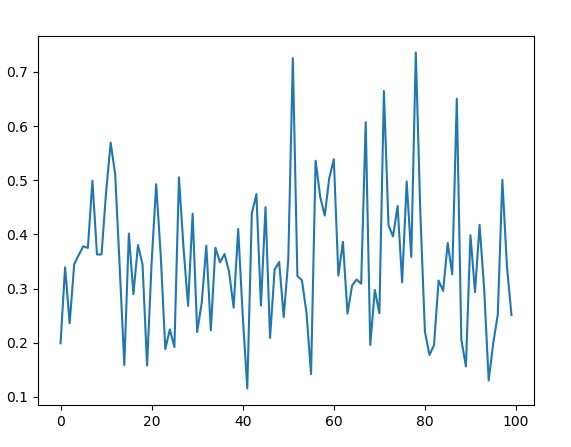betavariate()是内置的方法random模块。它用于返回具有beta分布的随机浮点数。返回值在0到1之间。
用法: random.betavariate(alpha, beta)
参数:
alpha:大于0
beta:大于0
返回:一个介于0和1之间的随机beta分布浮点数
范例1:
# import the random module
import random
# determining the values of the parameters
alpha = 5
beta = 10
# using the betavariate() method
print(random.betavariate(alpha, beta))输出:
0.5148685287422776
范例2:我们可以多次生成该数字并绘制图表以观察beta分布。
# import the required libraries
import random
import matplotlib.pyplot as plt
# store the random numbers in a
# list
nums = []
low = 10
high = 100
mode = 20
for i in range(100):
temp = random.betavariate(5, 10)
nums.append(temp)
# plotting a graph
plt.plot(nums)
plt.show()输出:

相关用法
- Python os._exit()用法及代码示例
- Python os.WEXITSTATUS()用法及代码示例
- Python os.abort()用法及代码示例
- Python os.renames()用法及代码示例
- Python os.lseek()用法及代码示例
- Python calendar formatmonth()用法及代码示例
- Python PyTorch sin()用法及代码示例
- Python Sympy Line.is_parallel()用法及代码示例
- Python PIL GaussianBlur()用法及代码示例
- Python range()用法及代码示例
- Python Numpy np.hermefit()用法及代码示例
- Python Numpy np.hermevander()用法及代码示例
注:本文由纯净天空筛选整理自Yash_R大神的英文原创作品 random.betavariate() method in Python。非经特殊声明,原始代码版权归原作者所有,本译文未经允许或授权,请勿转载或复制。
